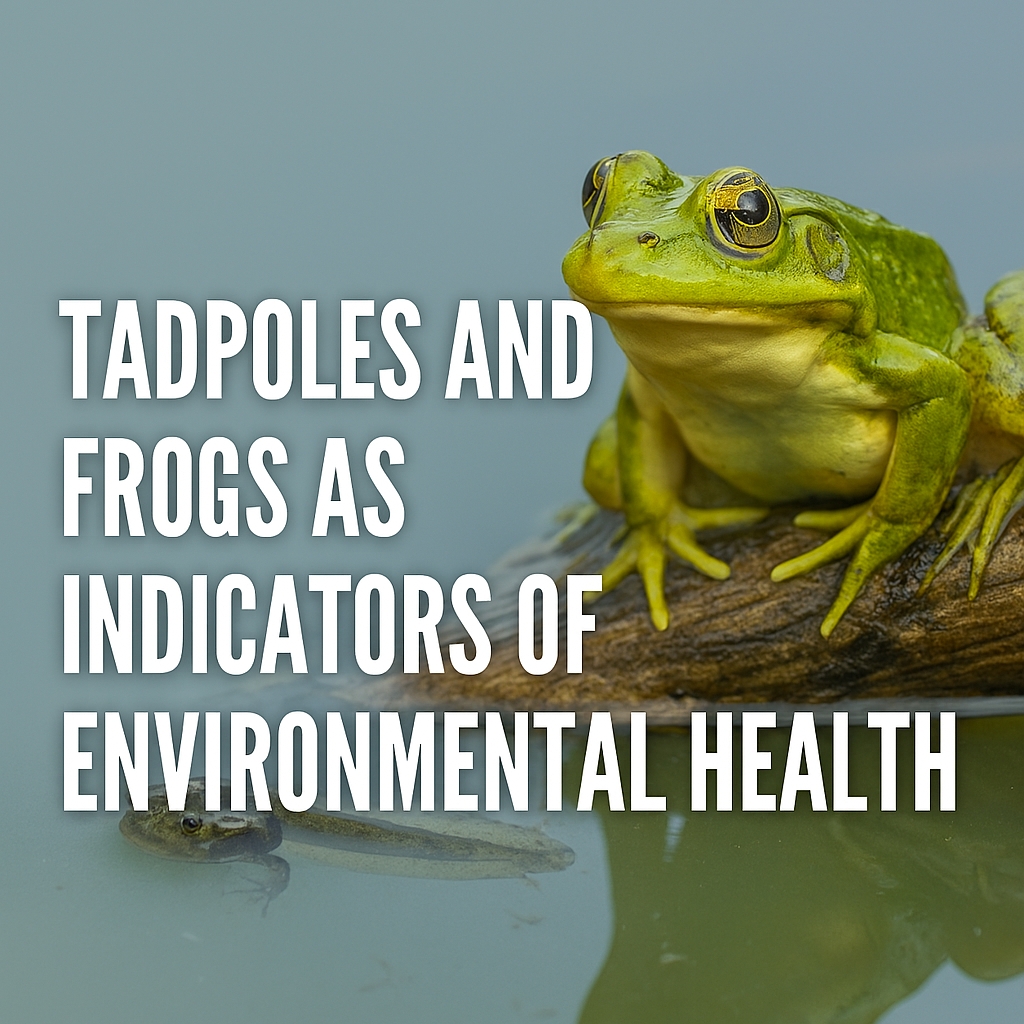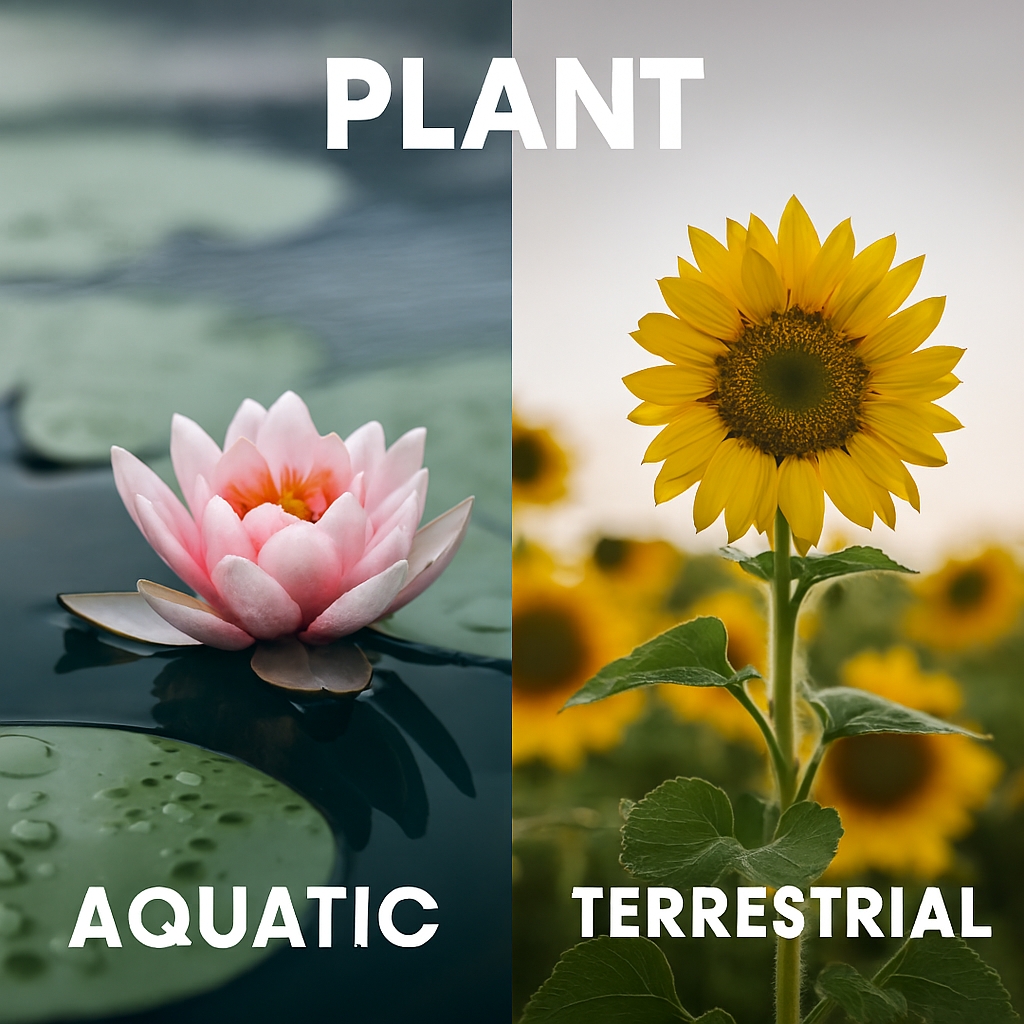Amazing Tadpoles And Frogs
Understanding Amphibians In Ecosystem Balance Recognizing Their Role In Biodiversity Maintenance
Tadpoles and frogs are more than just familiar sights in ponds and wetlands. They are vital indicators of environmental health and ecosystem stability. Their presence often signals clean water, balanced biodiversity, and functioning food chains. Amphibians are sensitive to pollutants due to their permeable skin, making them early warning systems for ecological distress. Tadpoles help regulate algae levels, preventing harmful blooms that disrupt aquatic life. Frogs contribute to pest control by consuming insects that threaten crops and spread disease. Their dual life stages—aquatic tadpoles and terrestrial frogs—connect water and land ecosystems. This interdependence makes them crucial for nutrient cycling and energy flow. Declines in frog populations often precede broader ecological collapses. Protecting amphibians means safeguarding the integrity of entire habitats.
Amphibians And Water Quality Monitoring Tadpoles As Natural Filtration Agents
| Amphibian Role | Environmental Impact |
|---|---|
| Tadpoles consume algae | Prevents eutrophication |
| Frogs absorb toxins | Indicates pollution levels |
| Tadpoles feed on detritus | Enhances nutrient recycling |
| Frogs require clean water | Signals habitat health |
| Tadpoles reduce turbidity | Improves aquatic clarity |
| Frogs breathe through skin | Sensitive to chemical changes |
| Tadpoles stabilize oxygen levels | Supports aquatic life |
| Frogs reflect climate shifts | Tracks ecosystem changes |
| Tadpoles regulate microbial growth | Maintains water balance |
| Frogs avoid contaminated zones | Reveals toxic hotspots |
Frogs As Bioindicators Of Ecosystem Integrity Their Sensitivity To Environmental Stressors
Frogs are among the most effective bioindicators due to their unique physiology. Their skin allows direct absorption of water and airborne substances, making them vulnerable to pollutants. Changes in frog populations often reflect shifts in temperature, humidity, and chemical composition. Their disappearance from a region can indicate habitat degradation or contamination. Frogs also respond to noise pollution and light disruption, revealing human impact on natural rhythms. Because they inhabit both aquatic and terrestrial zones, frogs offer insights into multiple ecosystems simultaneously. Their breeding patterns are influenced by seasonal cycles, making them useful for tracking climate change. Frogs are very sensitive creatures that react to invasive species that alter food webs. Their health reflects the availability of prey and shelter. Monitoring frogs helps scientists anticipate broader ecological threats.
Key Indicators Of Frog Health And Environmental Stability
- Skin lesions or deformities suggest chemical exposure
- Reduced population density signals habitat loss
- Abnormal calls indicate stress or hormonal disruption
- Delayed metamorphosis reflects temperature imbalance
- Increased mortality rates point to disease outbreaks
- Migration changes reveal climate anomalies
- Breeding failure suggests water contamination
- Behavioral shifts imply predator pressure
- Absence from historical ranges shows ecosystem collapse
- Presence of multiple species confirms biodiversity
Tadpoles And Nutrient Cycling In Aquatic Systems Supporting Detritus Breakdown And Algae Control
Tadpoles play a critical role in maintaining the health of freshwater environments. By feeding on algae, they prevent overgrowth that can suffocate aquatic life. Their consumption of dead plant material and organic debris accelerates decomposition. This process releases nutrients back into the water, supporting other organisms. Tadpoles also help maintain oxygen levels by reducing microbial overactivity. Their grazing patterns influence the distribution of aquatic vegetation. Tadpoles contribute to sediment stabilization, preventing erosion. Their presence supports fish and invertebrate populations by balancing food availability. Tadpoles are also prey for many species, linking energy flow across trophic levels. Their disappearance can disrupt entire aquatic ecosystems.
| Tadpole Function | Ecological Benefit |
|---|---|
| Algae consumption | Prevents oxygen depletion |
| Detritus feeding | Enhances nutrient cycling |
| Sediment stirring | Improves water clarity |
| Grazing control | Balances plant growth |
| Oxygen regulation | Supports aquatic respiration |
| Microbial moderation | Reduces disease risk |
| Vegetation shaping | Maintains habitat structure |
| Prey availability | Sustains predator populations |
| Organic matter breakdown | Accelerates decomposition |
| Habitat occupation | Indicates water quality |
Frogs In Pest Management And Agricultural Health Natural Predators Of Harmful Insects
Frogs are essential allies in controlling pest populations. They consume large quantities of insects, including mosquitoes, flies, and beetles. This reduces the spread of diseases like malaria and dengue. Frogs also help protect crops by eating agricultural pests. Their hunting behavior is efficient and sustainable, requiring no chemicals. Frogs contribute to integrated pest management strategies. Their presence in farmlands indicates ecological balance. Frogs reduce the need for synthetic pesticides, lowering environmental toxicity. They also support pollinator populations by controlling competing species. Frogs are part of a natural defense system that benefits both farmers and ecosystems. Their decline can lead to pest outbreaks and crop damage.
Benefits Of Frogs In Agricultural Ecosystems
- Mosquito control reduces disease transmission
- Beetle consumption protects crops
- Fly reduction improves sanitation
- Balanced insect populations support pollinators
- Reduced pesticide use lowers soil contamination
- Frog presence indicates healthy farmland
- Natural pest control saves costs
- Frogs support biodiversity in agroecosystems
- Their decline warns of ecological imbalance
- Frogs enhance food security indirectly
Amphibians As Climate Sentinels Tracking Shifts In Temperature And Rainfall Patterns
Frogs and tadpoles are highly responsive to changes in climate, making them valuable indicators of environmental shifts. Their breeding cycles are closely tied to rainfall and temperature, so disruptions in these patterns can delay or prevent reproduction. Amphibians often migrate to breeding grounds during specific seasonal windows, and altered timing can reduce survival rates. Tadpoles require stable water levels to complete metamorphosis, and droughts or floods can decimate populations. Frogs are also sensitive to humidity, which affects their ability to breathe through their skin. As climate change intensifies, amphibians are among the first to show signs of stress. Shifts in frog distribution offer clues about habitat suitability and ecosystem resilience. Monitoring these changes helps scientists model future climate impacts. Amphibians serve as living thermometers and barometers for the natural world.
| Climate Factor | Amphibian Response |
|---|---|
| Rising temperatures | Altered breeding cycles |
| Decreased rainfall | Reduced tadpole survival |
| Increased drought | Habitat desiccation |
| Unseasonal storms | Breeding disruption |
| Humidity changes | Respiratory stress |
| Warmer winters | Premature emergence |
| Heatwaves | Mass mortality events |
| Shifting seasons | Migration confusion |
| Flooding | Egg and larval loss |
| Climate variability | Range contraction |
Frogs As Connectors Between Land And Water Bridging Aquatic And Terrestrial Ecosystems
Frogs are uniquely positioned to link aquatic and terrestrial environments. Their life cycle begins in water as tadpoles and transitions to land as adults. This dual existence allows them to transfer nutrients and energy between ecosystems. Tadpoles feed on aquatic detritus, while adult frogs consume terrestrial insects. Frogs often return to water bodies to breed, bringing organic material from land. Their movement supports seed dispersal and microbial exchange. Frogs also serve as prey for both aquatic and land-based predators. Their presence supports food webs across ecological boundaries. Frogs help regulate insect populations in both habitats. Their disappearance can sever critical ecological connections. Protecting frogs means preserving the integrity of entire biomes.
Ecological Roles Across Habitats
- Tadpoles recycle nutrients in ponds and wetlands
- Adult frogs control insect populations on land
- Frogs transport organic matter between ecosystems
- Their eggs enrich aquatic food chains
- Frogs support birds, snakes, and fish as prey
- Amphibians influence microbial diversity in soil and water
- Their movement aids in seed dispersal
- Frogs link seasonal cycles across habitats
- Their calls influence animal behavior and territory
- Frogs maintain balance in edge ecosystems
Tadpoles And Disease Regulation In Wetlands Suppressing Pathogens Through Grazing And Competition
Tadpoles play a subtle but powerful role in disease regulation. By feeding on algae and organic debris, they reduce the habitat for harmful bacteria and parasites. Their grazing limits the growth of cyanobacteria, which can produce toxins. Tadpoles also compete with mosquito larvae for food, reducing the spread of vector-borne diseases. Their presence helps maintain microbial balance in aquatic systems. Healthy tadpole populations can suppress outbreaks of waterborne illnesses. Tadpoles indirectly protect fish and amphibians from fungal infections by cleaning the water. Their digestive processes break down organic waste, limiting pathogen reservoirs. Tadpoles also influence the abundance of snails that host parasites. Their decline can lead to increased disease transmission. Maintaining tadpole populations is a natural form of biosecurity.
| Disease Factor | Tadpole Impact |
|---|---|
| Algal blooms | Suppressed by grazing |
| Cyanobacteria | Reduced through competition |
| Mosquito larvae | Outcompeted for food |
| Organic waste | Broken down efficiently |
| Pathogen reservoirs | Minimized by detritus removal |
| Fungal spores | Filtered from water |
| Snail hosts | Controlled through predation |
| Bacterial hotspots | Disrupted by movement |
| Water clarity | Improved to limit disease |
| Microbial balance | Maintained through feeding |
Frogs As Cultural And Ecological Symbols Their Role In Storytelling And Conservation Awareness
Frogs have long held symbolic significance in cultures around the world. They appear in myths, folklore, and spiritual traditions as symbols of transformation, fertility, and renewal. Their metamorphosis from tadpole to frog mirrors cycles of growth and change. In many Indigenous cultures, frogs are seen as rain-bringers and guardians of water. Their calls mark seasonal transitions and are woven into local calendars. Frogs also feature in environmental education as accessible ambassadors for biodiversity. Their visibility and vocalizations make them ideal for citizen science projects. Frogs help bridge emotional connections between people and nature. Their decline often sparks public concern and conservation action. By protecting frogs, communities protect the stories and ecosystems they represent. Frogs are both ecological actors and cultural messengers.
Cultural And Educational Significance
- Frogs symbolize transformation and rebirth
- Their calls signal seasonal change
- Frogs appear in myths as water guardians
- They are used in school science programs
- Frogs inspire environmental art and music
- Their decline raises ecological awareness
- Frogs connect children to nature
- They feature in conservation campaigns
- Frogs embody the fragility of ecosystems
- Their presence fosters stewardship values

Amphibians And Habitat Connectivity Supporting Ecological Corridors And Species Movement
Frogs and tadpoles contribute to the developing connectivity of broken and or fragmented habitats. Their movement between water bodies and terrestrial zones helps maintain genetic diversity across populations. Frogs often migrate during breeding seasons, linking isolated wetlands and ponds. These movements support pollination indirectly by influencing insect populations. Tadpoles, though less mobile, contribute to aquatic connectivity through nutrient exchange. Frogs also use riparian corridors, which serve as lifelines for many species. Their presence indicates the viability of these pathways. Amphibians help maintain ecological gradients, allowing species to adapt to changing conditions. Their decline can signal the breakdown of habitat networks. Protecting frogs ensures the continuity of life across landscapes.
| Connectivity Role | Ecological Impact |
|---|---|
| Seasonal migration | Links isolated habitats |
| Genetic exchange | Prevents inbreeding |
| Corridor use | Supports biodiversity |
| Wetland hopping | Enhances species dispersal |
| Insect regulation | Influences pollinator patterns |
| Riparian movement | Maintains edge ecosystems |
| Amphibian trails | Indicate viable pathways |
| Habitat bridging | Supports climate adaptation |
| Tadpole nutrient flow | Connects aquatic systems |
| Frog presence | Validates corridor health |
Frogs And Amphibians In Urban Ecology Adapting To Human Landscapes And Revealing Urban Stress
Frogs are increasingly found in urban environments, where their survival reflects the quality of green infrastructure. Urban ponds, rain gardens, and drainage systems can support amphibian life if designed with ecological sensitivity. Frogs in cities help control mosquito populations and contribute to public health. Their calls enrich urban soundscapes and reconnect people with nature. Tadpoles in stormwater systems reveal water quality and pollution levels. Amphibians also help assess the success of urban restoration projects. Their presence in parks and schoolyards supports environmental education. Frogs are vulnerable to roadkill, light pollution, and chemical runoff, making them indicators of urban stress. Their resilience shows the potential for coexistence. Urban amphibians bridge the gap between conservation and community engagement.
Urban Amphibian Insights
- Frog calls enhance urban biodiversity awareness
- Tadpoles in storm drains reveal water toxicity
- Amphibians reduce urban mosquito populations
- Their presence supports green infrastructure goals
- Frogs reflect success of habitat restoration
- Urban frogs face threats from traffic and noise
- Their survival indicates ecological resilience
- Frogs connect children to nature in cities
- Amphibians help monitor runoff and pollution
- Their decline warns of urban ecosystem failure
Tadpoles And Food Web Stability Anchoring Aquatic Trophic Dynamics
Tadpoles occupy a foundational role in aquatic food webs. As primary consumers, they feed on algae and detritus, converting energy into biomass. This supports higher trophic levels, including fish, birds, and amphibians. Tadpoles also compete with other herbivores, influencing species composition. Their abundance affects predator populations and feeding behavior. Tadpoles serve as prey for aquatic insects, reptiles, and mammals. Their disappearance can destabilize food chains and reduce ecosystem productivity. Tadpoles help buffer energy fluctuations by maintaining consistent biomass. Their role in nutrient cycling supports microbial communities. Tadpoles also influence the spatial distribution of aquatic organisms. Protecting them ensures the resilience of entire food webs.
| Food Web Role | Ecological Function |
|---|---|
| Primary consumer | Converts energy from algae |
| Detritus feeder | Supports decomposition |
| Prey species | Sustains predators |
| Competitor | Shapes species dynamics |
| Biomass contributor | Buffers energy flow |
| Nutrient recycler | Enhances microbial health |
| Habitat shaper | Influences aquatic layout |
| Energy transfer agent | Links trophic levels |
| Population regulator | Balances aquatic diversity |
| Food chain anchor | Maintains ecosystem stability |
Frogs And Amphibians In Conservation Planning Guiding Restoration And Protection Strategies
Frogs are central to conservation efforts due to their ecological sensitivity and symbolic value. Their presence helps identify priority habitats for protection. Amphibians are often used to assess the success of wetland restoration projects. Conservationists monitor frog calls and breeding patterns to evaluate habitat quality. Frogs also guide the placement of wildlife corridors and buffer zones. Their decline can prompt targeted interventions, such as pollution control or invasive species removal. Frogs are included in biodiversity indices used by governments and NGOs. Their visibility makes them effective in public outreach and fundraising. Amphibians help align conservation goals with ecosystem services. Their protection supports broader environmental resilience. Frogs are not just beneficiaries of conservation—they are its architects.
Conservation Applications Of Amphibians
- Frog calls used in habitat monitoring
- Tadpole presence guides wetland restoration
- Frogs help map ecological corridors
- Amphibians included in biodiversity indices
- Their decline triggers conservation alerts
- Frogs support public engagement campaigns
- Amphibians reflect success of protection zones
- Their survival validates restoration efforts
- Frogs align with ecosystem service goals
- Amphibians shape conservation priorities
Amphibians And Genetic Diversity Preservation Safeguarding Evolutionary Potential In Changing Environments
Frogs and tadpoles contribute to the genetic resilience of ecosystems. Their diverse reproductive strategies—from external fertilization to complex parental care—support varied gene pools. Amphibians often breed in isolated microhabitats, creating genetically distinct populations. These pockets of diversity are crucial for adapting to environmental stress. Tadpoles from different regions may exhibit unique traits suited to local conditions. Frogs also hybridize across species boundaries, introducing new genetic combinations. Their genetic variation helps buffer ecosystems against disease and climate change. Amphibians serve as reservoirs of evolutionary potential. Conservation of frog populations protects not just species, but the adaptive capacity of entire ecosystems. Genetic monitoring of amphibians informs long-term ecological planning.
| Genetic Role | Ecological Benefit |
|---|---|
| Diverse breeding modes | Enhances gene flow |
| Isolated populations | Preserve local adaptations |
| Hybridization | Introduces new traits |
| Genetic variation | Buffers against disease |
| Microhabitat breeding | Supports niche resilience |
| Amphibian genome studies | Inform conservation strategies |
| Tadpole trait diversity | Reflects environmental pressures |
| Evolutionary plasticity | Enables climate adaptation |
| Genetic drift indicators | Reveal ecosystem fragmentation |
| Amphibian DNA archives | Support restoration efforts |
Frogs As Indicators Of Environmental Justice Revealing Inequities In Pollution And Habitat Access
Frogs often inhabit marginalized landscapes—urban edges, agricultural runoff zones, and degraded wetlands. Their health reflects the environmental burdens placed on these areas. Amphibians absorb toxins from soil and water, making them sensitive to industrial pollution. Their decline in low-income regions can signal unequal exposure to contaminants. Frogs also reveal disparities in access to clean water and green space. Their presence in community parks supports inclusive ecological planning. Amphibians help track environmental justice by showing where ecosystems are failing. Their survival depends on equitable land use and pollution control. Frogs are silent witnesses to human impact and policy neglect. Protecting them means addressing systemic environmental inequalities.
Environmental Justice Insights From Amphibians
- Frog decline in polluted zones signals toxic exposure
- Amphibians reflect unequal access to clean water
- Their absence from urban edges reveals habitat neglect
- Frogs in parks support inclusive conservation
- Tadpoles show runoff patterns from industrial sites
- Amphibians track pesticide drift in farming regions
- Their health informs community restoration priorities
- Frogs highlight gaps in green infrastructure
- Amphibians reveal climate vulnerability in low-income areas
- Their protection aligns with environmental equity goals

Tadpoles And Amphibians In Global Biodiversity Metrics Contributing To International Conservation Benchmarks
Amphibians are integral to global biodiversity assessments. Their population trends are tracked by organizations like the IUCN and WWF. Tadpoles and frogs are used to measure ecosystem health across continents. Their decline contributes to the Red List of threatened species. Amphibians help define biodiversity hotspots and conservation priorities. Their presence supports international funding for habitat protection. Frogs are included in global indicators of freshwater ecosystem integrity. Tadpole surveys inform transboundary water management. Amphibians also guide rewilding and species reintroduction programs. Their visibility makes them effective in global awareness campaigns. Protecting frogs contributes to planetary ecological resilience.
| Global Metric | Amphibian Contribution |
|---|---|
| IUCN Red List | Tracks species decline |
| Biodiversity hotspots | Defined by amphibian presence |
| Freshwater integrity index | Informed by frog health |
| Ecosystem resilience scores | Include amphibian data |
| Rewilding success | Measured by frog return |
| Transboundary water policy | Guided by tadpole surveys |
| Global conservation funding | Prioritized by amphibian trends |
| Species richness maps | Include amphibian diversity |
| Climate vulnerability models | Use frog distribution |
| International awareness | Amplified by frog campaigns |
Frogs And Tadpoles As Ecological Teachers Inspiring Stewardship And Scientific Curiosity
Frogs and tadpoles are powerful tools for education and ecological literacy. Their life cycle offers a vivid example of transformation and adaptation. Amphibians are accessible to students and citizen scientists alike. Observing tadpoles teaches patience, observation, and respect for natural rhythms. Frogs inspire curiosity about biology, climate, and conservation. Their calls and movements engage sensory learning. Amphibians help build emotional connections to nature. They are featured in school curricula, nature centers, and science festivals. Frogs foster a sense of wonder and responsibility. Their decline motivates action and inquiry. Amphibians are not just subjects of study—they are mentors in ecological awareness.
Educational Value Of Amphibians
- Tadpole life cycle teaches metamorphosis
- Frogs engage multisensory learning
- Amphibians support citizen science projects
- Their presence enriches schoolyard habitats
- Frogs inspire ecological storytelling
- Tadpoles foster observational skills
- Amphibians connect children to seasonal cycles
- Frogs promote empathy for wildlife
- Their decline sparks conservation interest
- Amphibians build ecological literacy
Conclusion – Amphibians As Guardians Of Ecological Truth
Tadpoles and frogs are more than biological curiosities—they are guardians of ecological truth. Their presence signals clean water, balanced ecosystems, and resilient habitats. Their decline warns of pollution, fragmentation, and climate disruption. Amphibians connect land and water, science and story, community and conservation. They embody the fragility and strength of nature. Protecting frogs means protecting the systems that sustain life. Their voices echo the health of the planet. In every pond and forest, they remind us that environmental stewardship begins with attention, respect, and care. Amphibians are not just indicators—they are invitations to act.
Join The Discussion
Have you noticed frogs or tadpoles in your local environment? What stories do they tell about the health of your ecosystem?
#AmphibianWisdom #EcoIndicators #FrogVoices #TadpoleTruths #EnvironmentalStewardship #NatureSignals #BiodiversityGuardians #CleanWaterWatch #HabitatHealth #LivingEcosystems













Solastalgia And Ecological Grief Is Strange Yet Common
[…] requires equitable access to nature, participatory planning, and climate-adaptive design. It also involves recognising the emotional value of everyday landscapes. Urban resilience is not just about infrastructure—it is about emotional and ecological […]